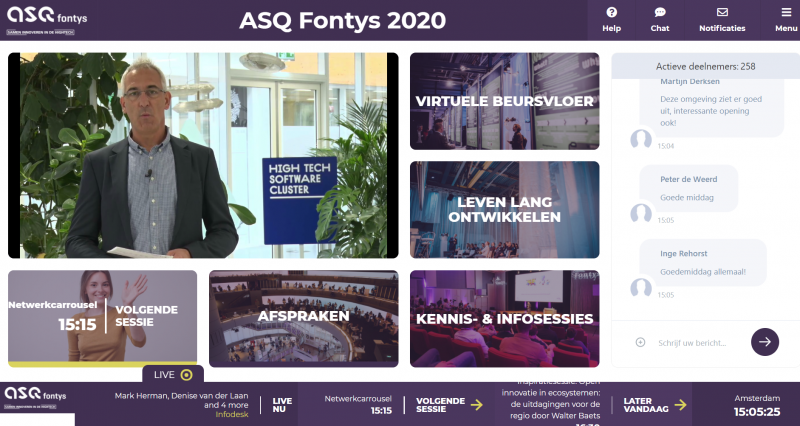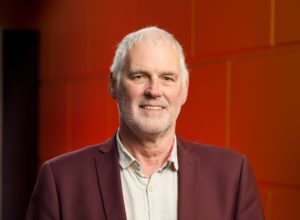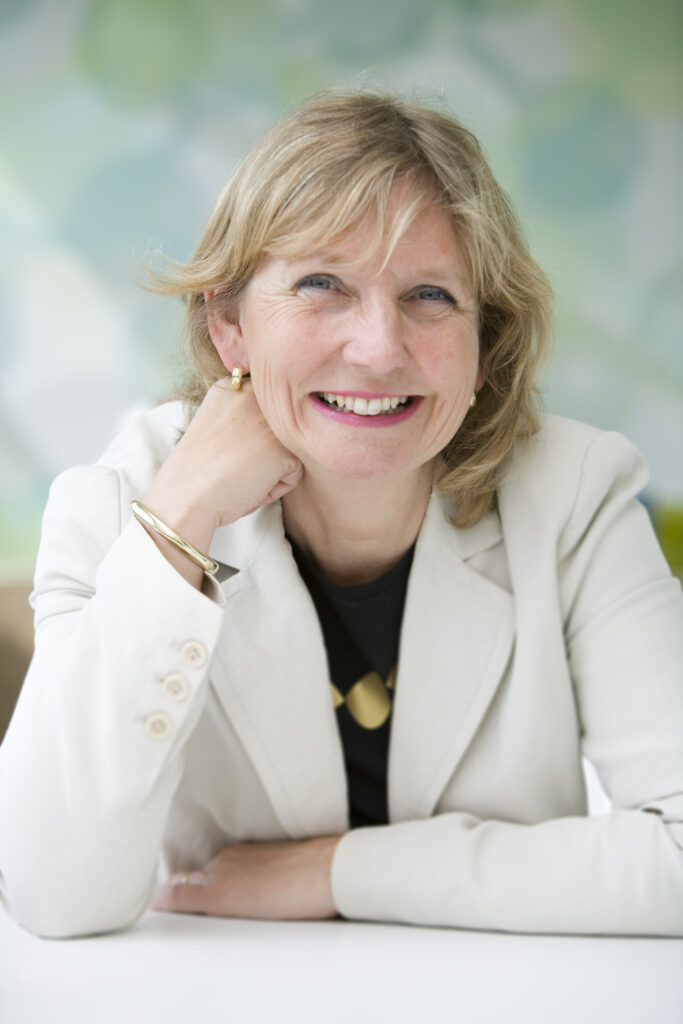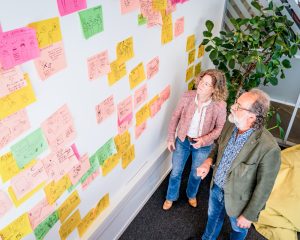Follow Eindhoven Engine on LinkedIn
LinkedIn is the most commonly used digital network for professionals. It is therefore excellent for sharing knowledge such as publications, white papers, presentations and meetings.
This summer, the Eindhoven Engine office team invested time into a LinkedIn networking training directed by social media guru Daria Tataj. Each team member has adjusted his or her profile based on Daria’s tips. What followed was the identification of everyone’s network. Which networks could be relevant to Eindhoven Engine? And who is the largest influencer within each network? What characterizes that influencer? If that influencer is relevant to Eindhoven Engine, how can we make them enthusiastic about the Eindhoven Engine formula? And which hashtags are important? As a result, our total number of followers has increased from approx. 500 to over 1800 within a few months. We hope that you’ve enjoyed reading our posts and learned more about our vision and our activities.
If you want to know more, simply follow Eindhoven Engine on LinkedIn. Welcome to our community.


Every year, Fontys University of Applied Sciences brings together the (high-tech) business community with experts from its own ranks in order to encourage mutual cooperation. This takes place under the name ‘ASQ Fontys’ and is organized by the Fontys Centre of Expertise HTSM (High Tech Systems and Materials). ASQ stands for All Sorts of Questions. The 2020 edition took place on 3 November and was completely virtual. This worked out well for the organization and for the 300+ visitors, who seized the opportunity to be inspired in a wide range of technical fields.
The fourth edition of ASQ Fontys offered a diverse range of options: 13 interactive knowledge sessions on research took place simultaneously in various online spaces in addition to seven information sessions on education for professionals.On the virtual exhibition floor, 38 stands were set up through which researchers and students spoke to visitors about their HTSM research projects. One of the knowledge sessions was dedicated to the Eindhoven Engine formula.
Walter Baets: “We are trapped in a linear and causal way of thinking. If we do what we have always done, we get what we always got. We cannot innovate, we re-search. Design thinking is needed.”
Walter Baets concluded the afternoon with a keynote lecture on open innovation in ecosystems. “Our challenge is business model innovation. The energy of imagination will start where time and space are one; that’s part of the Eindhoven Engine formula. Your personal transformation journey starts here.”

Networking
“A major challenge for this online event was the networking component,” says Mark Herman, who organizes ASQ Fontys on behalf of the Centre of Expertise HTSM. “We know that our visitors, including many technical SMEs from the Brainport region, come mainly to discuss innovation issues with each other and with experts and students from Fontys. At ASQ, we offer a platform where encounters are possible and where we do our best to make those encounters as inspiring and easy as possible. To this end, we organized knowledge sessions and a network carousel. But we were a bit uncertain on whether there would be sufficient interaction in this digital setting. The reactions of the participants, plus the fact that more than 100 appointments were made, gave us the confidence that we had succeeded.”
Innovation
At ASQ Fontys, high-tech entrepreneurs can turn to each other and to experts from Fontys with all of their questions. These questions can lead to research in which companies, Fontys researchers and students take on a challenge together. This is already happening: 38 research projects were presented on the virtual exhibition floor, showing that cooperation can lead to innovative solutions. This is not only relevant for the company involved but also provides topical and context-rich education for Fontys students.
Corona research
The latest batch of research revolves around a current theme: corona. Researchers are investigating how high-tech can contribute to recovery and innovative strength during and after the corona crisis. Cees van Tilborg is leading one of these projects, ‘A robot is not a super spreader’. “In the hospitality industry, we see a lot of problems with the serving of food and drinks. People infect each other. The idea is that a robot can offer a solution because it spreads fewer viruses. The main goal of our research is to create a robot that can help in the hospitality industry and canteens, and later in the healthcare sector, and which is affordable.”
Read more about all HTSM research projects at www.fontys.nl/htsmonderzoek (in Dutch).

On Thursday 12 November, the fourth Impactful Innovation webinar for our internal community took place hosted by Judith Tesser and co-hosted by Joris Dufils. The goal of the webinar was to actively work towards cross-project group interactions not only by sharing challenges and innovations but also by continuing to challenge ourselves in order to generate more impact with our projects.
PerStim & IntelLight+ Projects

Rob Mestrom and Steven Beumer (PerStim) and Harold Weffers (IntelLight+) shared their stories of how they are working on meaningful, impactful innovations. In the PerStim project, which stands for Personalized Neurostimulation, Rob, Steven and their team are investigating how treatments for individuals with specific forms of epilepsy can be personalized effectively using a non-invasive approach in order to improve quality of life for these patients. Light plays an important role when looking at quality of life, as we learned from the second talk by Harold, coordinator of the IntelLight+ project. Harold explained how human-centric lighting could benefit us all through the development of algorithms for inferring and even predicting user context in order to accommodate user needs and preferences. Other aspects include innovative lighting and new design methodologies.
Through the sharing of knowledge during these webinars, we are seeing the first unexpected crossovers arise – the key to unleashing our collective intelligence! Thanks to our speakers, Rob, Steven and Harold!
Technology is developing at an exponential rate.
The impact is already felt in many domains of our daily lives: Our cars have become iPads on wheels and will partly become autonomous robots. We are addicted to the information flow of our smartphones. Our homes are becoming “smart,” and we watch TV via the Internet.
Corona accelerated the adoption of remote work and online meetings by at least two years. The pandemic also sped up the digitalization of healthcare.
How can researchers, innovators, founders, investors and entrepreneurs best use our collective intelligence to focus on future challenges? How can we create innovative processes and explore all the possibilities?
The question becomes, “Are we fast enough? Can we scale fast enough?”
Innovation by trial and error
One limiting factor is that knowledge generation and dissemination are normally followed by industrialization via existing companies or by founding startups. If we really want to speed up, the least we should do is practice concurrent innovation.
An even bolder move would be innovation through trial and error, through iteration loops and through learning by doing. And, of course, we need to devote more resources to innovation, including capital and talent.
In fact, if we co-innovate by bringing together people from research and from industry, we will accelerate all innovation processes, balancing between creative disruption divergence and focus.
This is what we want to achieve with Eindhoven Engine and this is also why I am on the Board at LUMO Labs.
Collective intelligence
It’s crucial to motivate researchers and executives to unite in our efforts to accelerate innovation.
In the university research space, our corporate partners make sure we have the resources to understand, then solve, real-world problems. At the same time, this collaboration allows us the freedom to look far into the future, anticipate what’s coming next, then leverage these insights.
This stimulates researchers to invent new solutions in the form of new theories and new designs. Combining new ideas with young entrepreneurs as well as experienced people into startups or new business for existing companies leads naturally to new implementations in society.
Cross-domain information exchange is crucial to co-creation. We call this “enabling” or “unleashing” our collective intelligence. It is obvious to implement in established ecosystems such as Brainport. And digital networking will also help build and sustain a global network of innovators dedicated to exponential innovation.
We are living in a very interesting time, when new technologies emerge so quickly, and societal challenges are so compelling.
We see the potential, and we should do our utmost to increase the speed of innovation. Connecting people and using our networks are the key ingredients for success. In the end, it is all about people and unleashing their full potential.
Prof.dr. Maarten Steinbuch
Scientific Director Eindhoven Engine
Member Advisory Board LUMO Labs
Fontys, TNO and TU/e joint shareholders.
This month Fontys, TNO and TU/e officially became equal shareholders (1/3 each) of Eindhoven Engine. Together the three parties promise to do everything possible to accelerate innovation in the Brainport region. The result is an even better cluster of strengths whereby the innovative business community – from start-up to large company – can take maximum advantage of the available knowledge and skills.
Katja Pahnke, who together with Maarten Steinbuch is responsible for the day-to-day management of Eindhoven Engine, is proud of the result. “In this way we can achieve the intended exponential acceleration of innovation even faster. We connect knowledge institutes to the business community. Stimulate collaboration at a single location. This gives you the intended cross-fertilization between different disciplines.” Maarten Steinbuch adds: “This allows you to benefit from each other’s expertise, network and experience. That acceleration of innovation, that’s what we do it for.”
Ella Hueting, Fontys: “In my opinion, this collaboration is unique. We expect these short lines of communication to be of even greater significance for SMEs.”
Jaap Lombaers, TNO: “We are going to have teams of students from TU/e and Fontys in our innovation programs for and with the industry. In this way we can serve business and industry in the Brainport region in all kinds of ways. We expect that this will enable us to lower barriers and accelerate innovation.”
Eindhoven Engine started in 2019. With support from the Brainport Action Agenda RegioDeal, sixteen projects have been started. The collective ambition is to further accelerate innovation in our region through collaboration and co-creation at a co-location.
Eindhoven Engine
Eindhoven Engine unlocks the collective intelligence in the Brainport region. Thanks to a unique formula, innovators from companies can join forces with students and experienced researchers and employees from knowledge institutions in order to work together to accelerate innovation and realize disruptive co-creation projects in which co-location is a prerequisite. The founding fathers of Eindhoven Engine are the knowledge institutions Fontys, TNO and Eindhoven University of Technology and the companies Philips Healthcare, Signify, ASML, VDL, NTS and NXP. Eindhoven Engine’s funds come from the Brainport Region Deal.

After this unique summer period, life was a bit back to normal at the campus in Eindhoven – at least to a certain extent due to corona and the possibilities for working safely according to the regulations. Following the recent announcements, we are going back to the pre-summer situation but we feel that we are better prepared now. We are eager to boost our virtual meetings with limited activities in co-location in our MultiMedia Paviljoen building, which is now in its final phase of restructuring. We look forward to the finishing line in this process!
In this edition of Eindhoven Engine News:
- Interview with Ella Hueting, Director of Fontys School of Engineering and chairman of Eindhoven Engine’s Advisory Board.
- OpenCall project SoStrap highlighted
- Walter Baets is Making Meaning project with Design Forum
- Collaborative capital: the value of soft skills in technical domains
- and more…
Stay connected with Eindhoven Engine.
Subscribe to Eindhoven Engine News via office@eindhovenengine.nl.
Another step forward for Eindhoven Engine: Fontys University of Applied Sciences and TNO have joined TU Eindhoven as shareholders. “It’s quite a statement,” says Ella Hueting, Director of Fontys School of Engineering and chairman of Eindhoven Engine’s Advisory Board. “I don’t know of any other initiative where all the knowledge centers in the chain are the shareholders and work together with companies in the region.”
Sharing the load
In some ways, this development has been a long time coming. “Eindhoven Engine is about involving students with companies in the Brainport region, which Fontys has done for a long time, especially with SMEs,” Ella explains. “It was very natural for us to get involved.”
By becoming equal partners, she hopes to send a message to the Netherlands that Brainport’s success also lies in knowledge institutes working with both companies and one another. “In engineering, for example, Fontys has almost 1200 students working on projects from about 300 companies each year. When it comes to smaller companies, knowledge is not so available. Should we use robotics, for instance? It’s important for both big and small companies, so we can work on projects where high-level theoretical knowledge comes from TU/e and TNO and Fontys can apply it in smaller companies. It’s very complementary, I think.”
“The projects are even more important than before. Businesses really have to innovate right now.”
A new NatLab
One such example is SmartMan@SME, a Fontys-led project which brings together TNO, VDL and VBTI as partners in OpenCall 2020. This aims to improve factory efficiency by optimizing production processes for SMEs. “It’s not one fixed research project but rather smaller projects which we work on together,” notes Ella. “It’s a question of the company itself, which asks us to help them apply a new technology. We then work on it together with a couple of students. TU/e students have a high theoretical level and some of them really want to apply this too, so all our knowledge is now connected. It’s wonderful!”
Success in SmartMan will be measured in terms of the economic value of improvements per project and company but could also represent the start of something bigger. Ella: “With Eindhoven Engine, I think Maarten [Steinbuch] wanted to achieve a new NatLab. This could be the first step. I’m really enthusiastic about this project, which I think is unique. Now we’re started, I think we’ll achieve big success – particularly in this corona time.”
Opportunities and exposure
In keeping with the forward-thinking nature of Eindhoven Engine, Ella prefers to view the ongoing pandemic in terms of new possibilities. “The projects are even more important than before. Businesses really have to innovate right now. In Brainport and the Netherlands, we need to be challenged to work together and quickly bring new technologies to the market. This might be an opportunity because it’s something we’re good at, and it could give us a big advantage compared to other countries. After all, we have a lot of international students who know that this region is the place to be. Eindhoven Engine creates exposure for what we can do.”

“In multidisciplinary projects, people are often experts in their own fields and basically speak different languages,” explains TU/e researcher Piet van Gool. “Most of the time, innovation goes wrong because of the human factor.”
With a background in both psychology and industrial engineering, Piet has found his perfect match in the Eindhoven Engine project Building Collaborative Capital with Tailored Developmental Journeys. This recognizes that limited focus has been placed on soft skills for effective collaboration across disciplines and institutions, which is an absolute necessity for innovation acceleration through co-location. The project will therefore develop, implement and test a set of modular and scalable instruments and interventions for assessing and developing collaborative competences.
Benefits versus burdens
The genesis for this occurred when Piet’s colleague Josette Gevers met Maarten Steinbuch to discuss soft skills within the Engine. “Most people don’t know that there are actually psychology groups in Eindhoven, but we’re in the Human Performance Management group of Industrial Engineering. At a technical university, it’s quite rare!” says Piet. “That’s also where I did my PhD, which looked at job crafting: making little changes to your job on your own initiative to become more engaged and creative in your work. I particularly looked at how people construct and use their social networks, so basically how they collaborate. It’s not so much about the technical stuff but the interactions between people and how they work.”
‘One of my goals is to give people the practical skills to create their own ideal environment.’
In terms of working methods, one complicating factor in projects can often be the combination of different institutions with different incentives. Eindhoven Engine, for example, has many PhD students who are interested in collaboration but are simply too absorbed in their own discipline. Articles must be published quickly and efficiently and shared goals may be missing, so collaboration can seem like more of a burden than a benefit.
The power of tacit knowledge
To counter this perception, the project is currently co-constructing and validating collaborative strengths-based capability profiles. “In order to unlock the collective intelligence of Eindhoven Engine, we need to assess these in our population and try to build or source interventions to improve the skills and competences of team members,” continues Piet. “Ideally, I would do this not only via questionnaires but also simulations, social network analysis and sociometric badges. I definitely want more face-to-face meetings, including with the Eindhoven Engine community. Most of the things you learn are from your peers – tacit knowledge that you can’t read anywhere. You meet in the corridor or at the coffee machine; you’re not going to have a Zoom meeting about how science works!”
Ultimately, the project should result in a toolbox of validated instruments and interventions for building collaborative capital, which can then easily be implemented on a larger scale. “One of my goals is to give people the practical skills to create their own ideal environment and make the best use of their own strengths and those of others,” Piet concludes. “If you have such an environment, innovations will come.”

In a pilot with Design Forum, the Eindhoven Engine Academy offered a ‘Making Meaning’ workshop to five of its running projects. Experienced designers, under the coordination of Jos Hardeman, have worked with the teams and their broader community towards a clearer understanding of the meaning and possible contributions of the project. The ultimate purpose is to assist the projects in developing an approach for meaningful communication about their project. The outcome is based on an outside-in analysis of how users and stakeholders see the project.
Elements of design thinking
What better than to first apply this approach to the Eindhoven Engine itself? Obviously, the approach is based on elements of design thinking, but it is not a full design thinking cycle. During a kick-off meeting with the core team, the procedure is explained and the few first ideas are exchanged. Next, the broader project team (in this case, the broader Eindhoven Engine team) can give input on their views in response to a questionnaire. Workshops are carried out with the wider project community, in which the team of designers use creative methods and aim to crystalize the essentials of the project from the viewpoint of its stakeholders. The designers analyze all of this and bring it together in a project canvas. The latter is validated in a meeting with the project team and its direct stakeholders. Eventually, a poster is created for communication purposes.
‘In fact, the Engine has a role to play in the transformation towards the co-creation paradigm of innovation.’
Lifelong learning platform
What was the outside world suggesting that Eindhoven Engine do? Other than the target groups we already have, it was suggested that we open the doors to intrapreneurs and employees interested in a sabbatical period and that we support companies and people who are having major challenges with transformation. By adding this focus, the Eindhoven Engine could become a lifelong learning platform.
Purpose-driven
The Engine is purpose-driven and accelerates the transformation from research towards application. In fact, the Engine supports application/client-driven innovations. It is important to open the projects up in order to integrate the full chain or, perhaps better, the broader network of stakeholders. Ideally, projects should include end-users, business development and students and maybe also politicians and/or the general public. This should create more flexible participation in innovation for all interested parties.
The Eindhoven Engine assists in and empowers the transformation from the power paradigm to the co-creation paradigm (Jansen and Pieters, 2017) or from the procedure-driven innovation approach to values-based innovation (Baets, 2020). This implies a stronger focus on rapid prototyping and a very close link with the researchers and companies.
In fact, the Engine has a role to play in the transformation towards the co-creation paradigm of innovation. It bridges co-creation, co-location, activation of collective intelligence, open innovation and disruption. In doing so, it facilitates innovation of wicked problems.

On 10 July, the third webinar of our Impactful Innovation series was held. The goal of the webinar series is to not only share challenges, innovations and impacts across Eindhoven Engine projects but also to actively work towards cross-project group interactions in order to unlock our collective intelligence.
This particular webinar was dedicated to two exciting topics. In the first presentation, Joep van der Velden (Kropman) took us into the world of continuous monitoring and fault detection of large HVAC systems (Heating, Ventilation and Air Conditioning) in order to reduce CO2 emissions. This was followed by Lukas Dekker (Catharina Ziekenhuis, TU/e), who presented the need and vision for value-based, outcome- and technology-driven future healthcare based upon innovation ecosystems.
It is very inspiring to see that these webinars are contributing to cross-organizational interactions. Big thanks to both Joep and Lukas for their excellent and enthusiastic presentations and, of course, to all participants who are enabling our collective intelligence. We look forward to the next webinar!
This particular webinar was dedicated to two exciting topics. In the first presentation, Joep van der Velden (Kropman) took us into the world of continuous monitoring and fault detection of large HVAC systems (Heating, Ventilation and Air Conditioning) in order to reduce CO2 emissions. This was followed by Lukas Dekker (Catharina Ziekenhuis, TU/e), who presented the need and vision for value-based, outcome- and technology-driven future healthcare based upon innovation ecosystems.
It is very inspiring to see that these webinars are contributing to cross-organizational interactions. Big thanks to both Joep and Lukas for their excellent and enthusiastic presentations and, of course, to all participants who are enabling our collective intelligence. We look forward to the next webinar!

